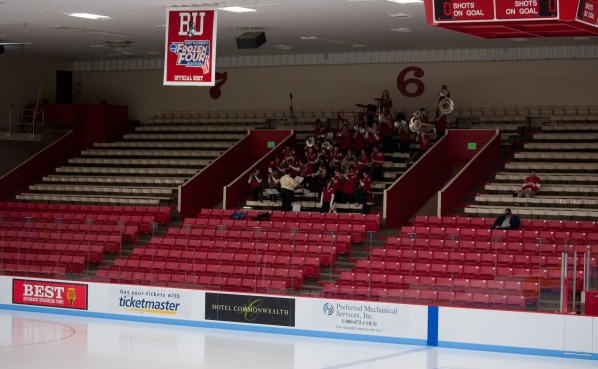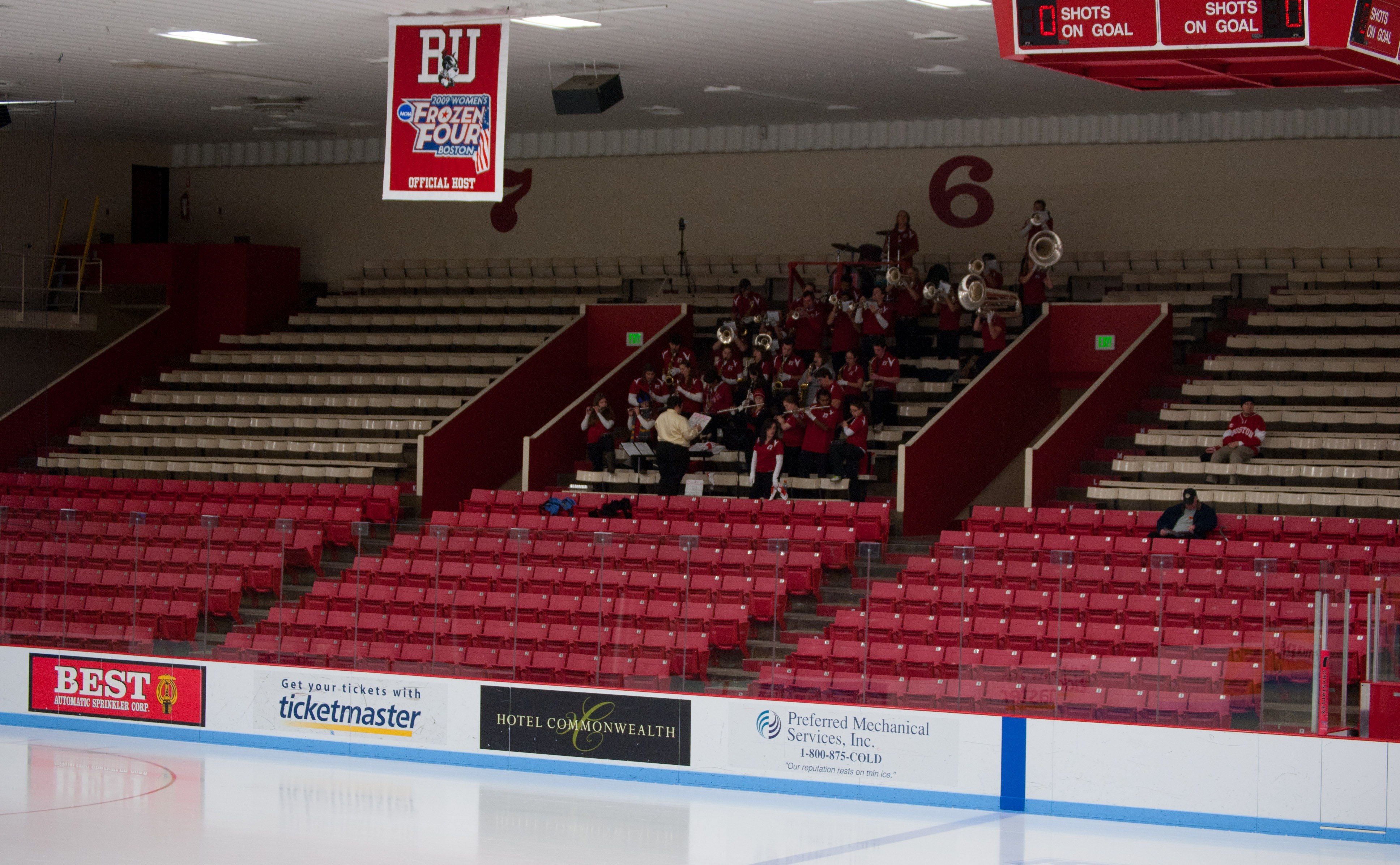Sports teams are quintessential to holding together the spirit of a campus, and there’s certainly no shortage of spirit when it comes to the BU men’s ice hockey team. Agganis Arena is frequently filled to capacity for big games, and often largely filled during the rest of the season. When people discuss sports on campus, they’re always talking about our men’s hockey team. It’s no wonder, given their past success. Two years ago, when they won the Division I National Championship, professors agreed to shorten classes so that students could join the parade on Comm Ave. The mayor even declared it Terrier Day. It was a big deal. But when other sports teams do well, there isn’t much celebration, or even knowledge about these successes.
Both the men’s and women’s soccer teams competed for the America East Championship this past fall, and while there were fans in the stands, it was largely family members of the teams. When it comes to sports at BU, it’s all about ice hockey, but not even ice hockey, men’s ice hockey. Despite the success of our women’s ice hockey team, it’s supported very little by the campus and community. Women’s sports have fought for equality, and Title IX was a huge step in ensuring they would forever live on campuses and in high schools. But that doesn’t mean that they’re really equal.

A New York Times article from last year reported that, “In 1989, the evening sports news shows devoted 5 percent of their time to women’s sports vs. 92 percent to men’s sports; women’s sports coverage peaked at 8.7 percent in 1999 before dropping to 1.6 percent in 2009. ESPN’s Sportscenter devoted only 1.4% of its time to women’s sports coverage in 2009”. Even now, as the world supposedly becomes more egalitarian and modern, women aren’t being given the same amount of recognition they deserve. If big sports networks like ESPN won’t give women’s sports equal time, how do they expect spectators to?
After recently attending a women’s hockey game, I was shocked to discover how few people were in attendance to support the team. Unlike at the men’s hockey games, there were plenty of empty seats at Walter Brown Arena. It was a sad sight, looking out at the sea of empty red bleacher seats, which remained unfilled for the duration of the game. Save for a few families milling about the stadium, only a handful of faithful friends cheered from the sidelines. So why is it that nobody goes to see our women’s ice hockey team?
It’s not just BU and it’s not just ice hockey. Women’s sports simply aren’t as popular as men’s sports, no matter how good the team or the individual player is. BU women’s ice hockey is currently ranked higher, at number 1 in Hockey East, versus the men’s team, which is currently number 3. While these are not staggering differences, their records are rather different. The women’s team is 21-2-3 so far this season, and the men’s team is 13-7-6. With a winning record and an amazing team, the women’s team still fails to draw a crowd.

In an effort to better understand the impact the lack of attendance has had on the women’s ice hockey team, I contacted the team’s head coach and BU alum, Brian Durocher; however, he declined my interview request. Under his tutelage, the women’s hockey team won its first Hockey East title and has become a top team in Hockey East. Prior to coaching the women’s team, he was the assistant coach to the BU men’s ice hockey team. His connections to BU run even deeper—he was a four year lettered goalie for the men’s ice hockey team when he attended BU, according to GoTerriers.com. Clearly Coach Durocher understands the significance of having committed fans, so it’s somewhat baffling that he wasn’t willing to comment on this issue.
According to Hockey East Online, the average number of attendees for this season has been 435 people, with an average of 291 people in attendance at all home games. The league average is not so far off, with a combined average of 291 people in attendance at each of the women’s games, home or away. Compare this with the men’s averages, which show that 5,553 people attend home games, and 4,764 people attend all of the BU men’s hockey games. While BU has one of the highest attendance rates for home games in the league, roughly 3,980 people attend any given men’s ice hockey game in the league. That’s 5,118 people more on average that attend men’s home games than women’s, and 3,689 more people on average that attend men’s hockey games at any school in the league, than women’s.
Despite the differences in records and ranking, students, alumni and fans are simply more prone to attending men’s sporting events than women’s, both at the college and professional level. Here at BU, this can plainly be seen by the empty seats at women’s ice hockey game, and by the statistics of average attendees. So when we say that men and women are created equal, do we really mean it?


I can see why a National Championship would be a “huge” deal, however, you compared America East Championship in soccer. It is NOT the same championship by any means but it is a still a great accomplishment.
I don’t know why more attend male sport over female sport, maybe its the physical play of the men’s game (Checking not allowed in womens hockey) or perhaps it is overall faster. I enjoy all sports and never like watching paint dry!
Tough problem to solve, Lisa, but thanks for bringing it to the surface again. I think moms and dads of young female athletes ought to be making a special effort to get to these games. It’s actually a really exciting game when you see it in person and the players are great role models for young girls.